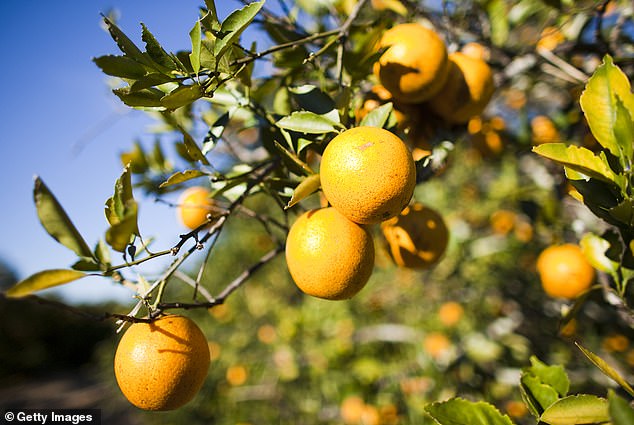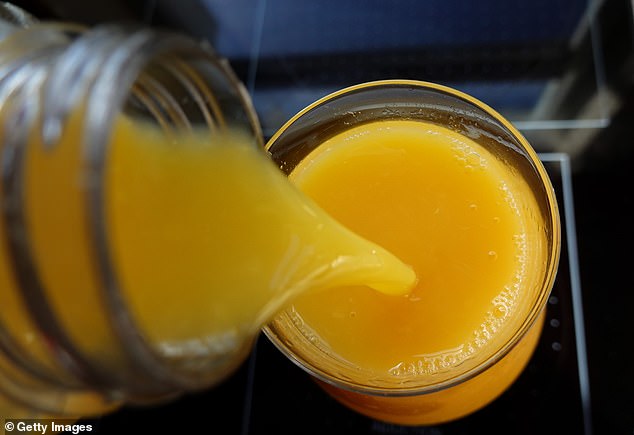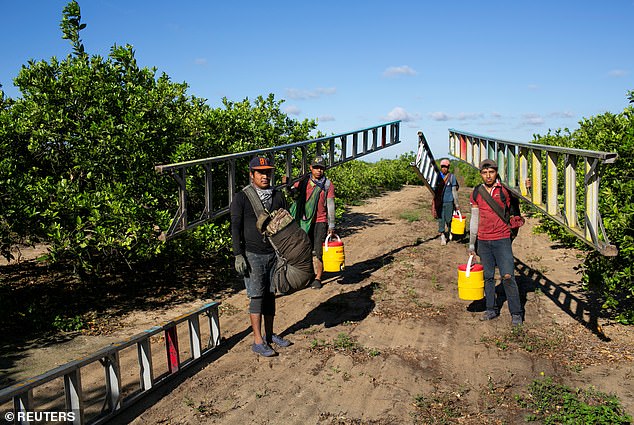Is orange juice now the biggest victim of inflation? Prices have nearly TRIPLED since the pandemic, after hurricanes in Florida undermined production
Is orange juice now the biggest victim of inflation? Prices have nearly TRIPLED since the pandemic, after hurricanes in Florida undermined production
- An 80 percent reduction in orange production in Florida will impact juice prices
- Greening diseases and hurricanes contribute to poor crops
- For the first time since World War II, California produces more oranges than Florida
Orange juice has more than tripled in price in the past three years, while Florida orange production is sinking to a low not seen since 1937.
The price of frozen orange juice concentrate, a global benchmark for the orange juice market, rose to a record high of more than $3.50 on Monday.
According to the U.S. Department of Agriculture, orange production in Florida has been affected by two phenomena: greening diseases and hurricanes.
In July, the department said it expected Florida to produce only 15.9 million boxes of oranges this year, a 70 percent drop from the 2020-21 season.
According to the agency, the oranges are also smaller than in the past, meaning more fruit is needed to fill the boxes.
The price of frozen orange juice concentrate, a global benchmark for the orange juice market, rose to more than $3.50 on Monday.

According to the U.S. Department of Agriculture, orange production in Florida has been affected by two phenomena: greening diseases and hurricanes.
Matt Joyner, CEO of Florida Citrus Mutual, recently told the Guardian: ‘At its peak, our sector processed approximately 244 million boxes of oranges. This season we ended up with just under 16 million boxes.
“You can see that this is a very dramatic drop due to this disease and multiple weather events that have really hit our industry. Supply and demand dictate that with such a reduced harvest there will be upward pressure on prices.’
Joyner added that hurricanes destroyed about 10 percent of Florida’s orange trees last year. And a late frost late last year caused further crop devastation.
The greening of citrus fruits is caused by the transmission of bacteria by tiny insects known as psyllids, which suck sap from orange trees.

California oranges are mostly eaten, while 95 percent of Florida oranges are used for juicing

Mexican migrant workers carry ladders during a harvest at an orange farm in Lake Wales, Florida, in 2020
It has also destroyed crops in Louisiana, Texas, California and Brazil – a country whose orange production is also strongly tied to the orange concentrate benchmark.
For the past half century, Florida has been responsible for the vast majority of the nation’s orange production, but in recent years an increasing share has come from California.
That’s not because California is ramping up production, but because Florida’s production has plummeted. This year, the Department of Agriculture predicts that California will surpass Florida’s production for the first time since the early 1940s.
The collapse of orange production in Florida has had a particularly hard impact on juice, because 95 percent of oranges are used for juicing, unlike those from California, the majority of which are eaten.
